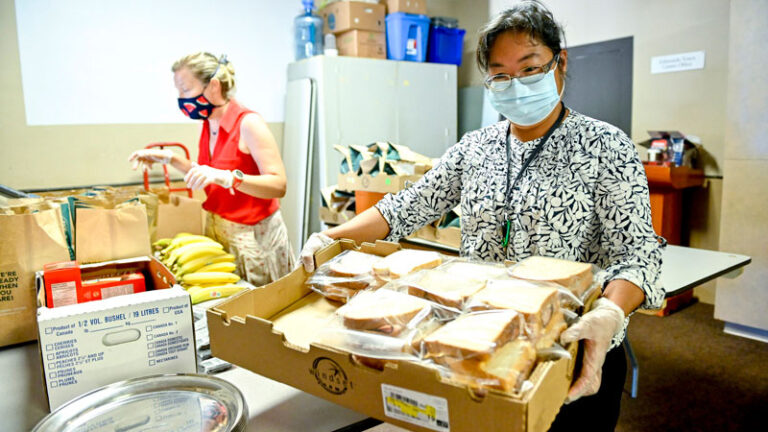CHICAGO — The COVID-19 pandemic has impacted almost every aspect of our lives, including our ability to afford food. Rates of food insecurity skyrocketed during the pandemic due to high unemployment numbers and the economic recession. Now, though, with vaccines more widespread and the economy beginning to get back on track, those rates are on the decline.
Illinois Newsroom’s Dana Cronin spoke with Diane Schanzenbach, Director of the Institute for Policy Research at Northwestern University, about how families are faring now that the pandemic’s end is in sight.
This interview has been lightly edited for clarity.
Dana Cronin: So you track rates of food insecurity among different groups based on data from the Census Bureau. What is that data showing right now?
Diane Schanzenbach: Fortunately, what we’re seeing is rates of food insecurity and the more narrow measure of hunger, which is people reporting that they sometimes or often didn’t have enough to eat in the past week, are at the lowest levels that they’ve been at any point of the pandemic. So the most recent data came out just about a week ago, it covered the second half of April. And we still find that a little over eight percent of people say that they went hungry in the past week, they sometimes or often didn’t have enough food to eat. But that’s down from a high that was almost 14 percent just at the end of December. So we’ve seen about a 40 percent drop over the last couple of months, which is great news.
DC: You know, the pandemic took a real toll on families in this country, that’s no secret, and especially their ability to put food on the table. Can you just give a brief overview of how bad it got and how long you expect those repercussions to last?
DS: Sure. So it certainly got bad. Families with kids, nearly one out of five across the nation, reported that they faced hunger at the peak of this. And that’s, one out of five, is a very high share of people. We have never seen numbers that high before. Of course, we’re measuring things differently during the pandemic. And it’s going to take us quite some time to figure out exactly how to compare this apples to apples. But we’re working on that. So then you were asking, how long are we going to see this? So here’s the bad news: we’re not out of the woods yet. I am so excited to see these declines in hardship. But we are going to continue to see elevated levels for years. We’re all tired of this pandemic, right? We want it to be behind us. But the need isn’t going to just evaporate. We are going to have to continue to work at this for months or even years.
DC: Families of color in this country are disproportionately impacted by food insecurity. How did that disparity play out during the pandemic? And how is it looking now?
DS: During the pandemic, when we had such highly elevated rates of hunger and food insecurity, it was really very evident that Blacks and Hispanics faced about twice the rate of hunger as whites and as Asians. And I’ll tell you, I’ve been working on this topic for years, and I hadn’t really understood prior to the pandemic that this ratio actually holds essentially all the time. You know, basically what the pandemic did was shed light on these huge disparities that we have. But I think now that we really understand that and we know that, I think that’s going to help us design better policies, better approaches to try to reduce those disparities. And really, you know, I’m optimistic that in the medium run, we could drive this rate of hunger all the way down to zero.
Dana is a reporter for Illinois Public Media. Follow her on Twitter: @DanaHCronin

